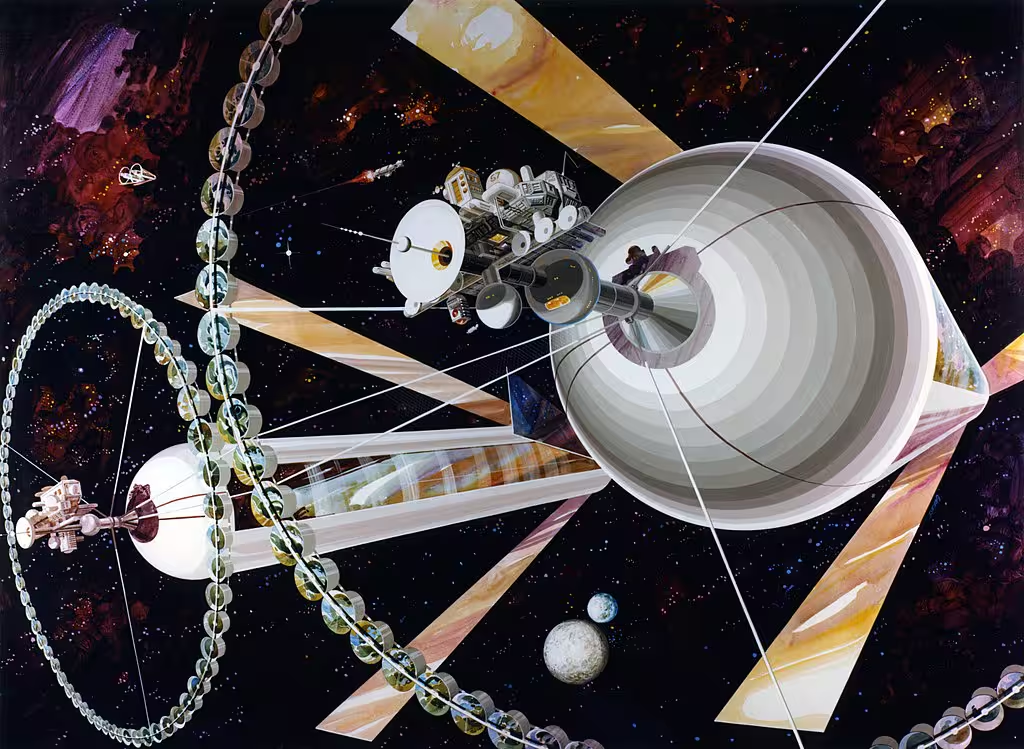
Imagine waking up in a city floating in space, surrounded by the vastness of the universe. Sounds like a scene straight out of a sci-fi movie, right? Well, for Professor Arindrajit Chowdhury and Tausif Shaikh from IIT Bombay, this isn’t just a dream—it’s a mission. Their startup, InspeCity, is on a quest to turn this visionary idea into reality. Yes, you heard that right. Space cities could be the next frontier for humanity, and India is aiming to lead the charge.
As an Indian, I feel a sense of pride knowing that minds from one of our premier institutions are pushing the boundaries of what’s possible. Professor Chowdhury, with his deep expertise in engineering and innovation, along with co-founder Tausif Shaikh, is working on technologies that could make sustainable living in space a tangible goal. Their vision? To create self-sufficient space cities that could support human life, exploration, and even industry beyond Earth.

Why Space Cities?
You might be wondering, why even consider space cities? The answer lies in the challenges we face on Earth. With growing populations, dwindling resources, and the looming threat of climate change, space offers a new frontier for exploration and survival. Space cities could serve as hubs for scientific research, space tourism, and even alternative habitats. It’s not just about escaping Earth’s problems but about expanding human potential and ingenuity.
InspeCity’s Vision and Approach
InspeCity isn’t just dreaming big; they’re thinking smart. Their approach focuses on creating modular, scalable, and sustainable habitats. Imagine building blocks that can be assembled in space to form entire cities. These habitats would rely on renewable energy, advanced life support systems, and cutting-edge technology to ensure they’re not just livable but thriving environments.
What’s fascinating is how they’re leveraging IIT Bombay’s ecosystem of innovation. The institute has always been a breeding ground for groundbreaking ideas, and InspeCity is a testament to that legacy. By collaborating with experts, researchers, and industry leaders, they’re paving the way for a future where space cities aren’t just possible but practical.
Challenges Ahead
Of course, building cities in space isn’t a walk in the park. The challenges are immense—from the technical complexities of space construction to the psychological and physiological effects of long-term space living. But as Professor Chowdhury often says, every great achievement starts with a bold vision. InspeCity is tackling these challenges head-on, focusing on innovation, sustainability, and collaboration.
One of the most exciting aspects of their work is its potential to inspire. Imagine young students in India looking up at the stars and dreaming of becoming architects of space cities. This isn’t just about technology; it’s about igniting curiosity and ambition in the next generation. It’s about showing the world that India can be a leader in space exploration and innovation.
What This Means for India
India has always been a pioneer in space exploration, from the successful Chandrayaan missions to the launch of the Mangalyaan spacecraft. InspeCity’s vision aligns perfectly with this legacy, taking it a step further. By venturing into the realm of space cities, India could position itself as a global leader in space technology and innovation.
As an Indian, I can’t help but feel excited about the possibilities. This isn’t just about science; it’s about national pride and global impact. It’s about showing that no dream is too big, no frontier too distant, when we put our minds to it.
So, the next time you look up at the night sky, remember—those stars might one day be home to cities built by visionaries like Professor Arindrajit Chowdhury and Tausif Shaikh. Space cities may sound like a futuristic fantasy, but with InspeCity’s vision and dedication, the future might be closer than we think.












